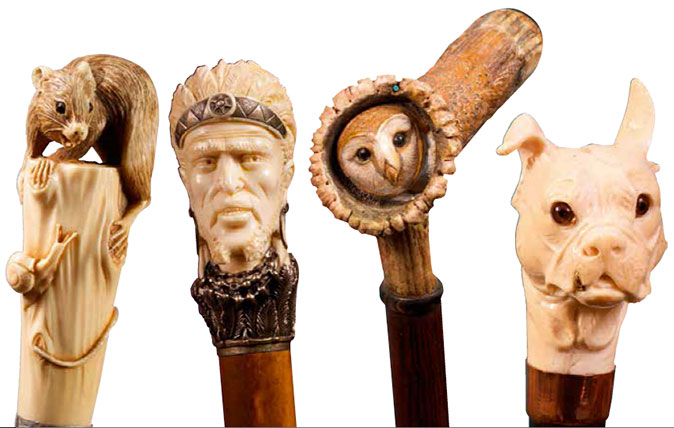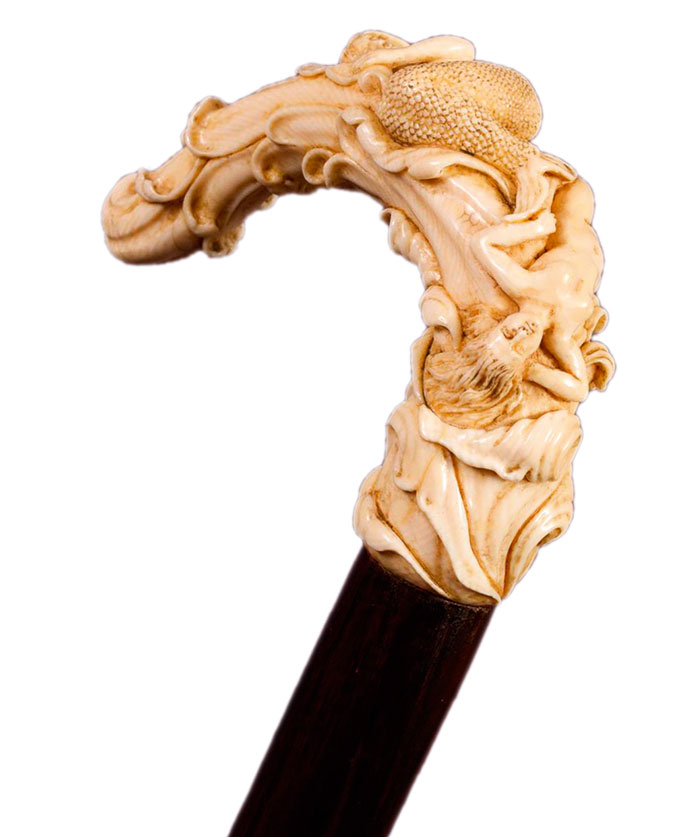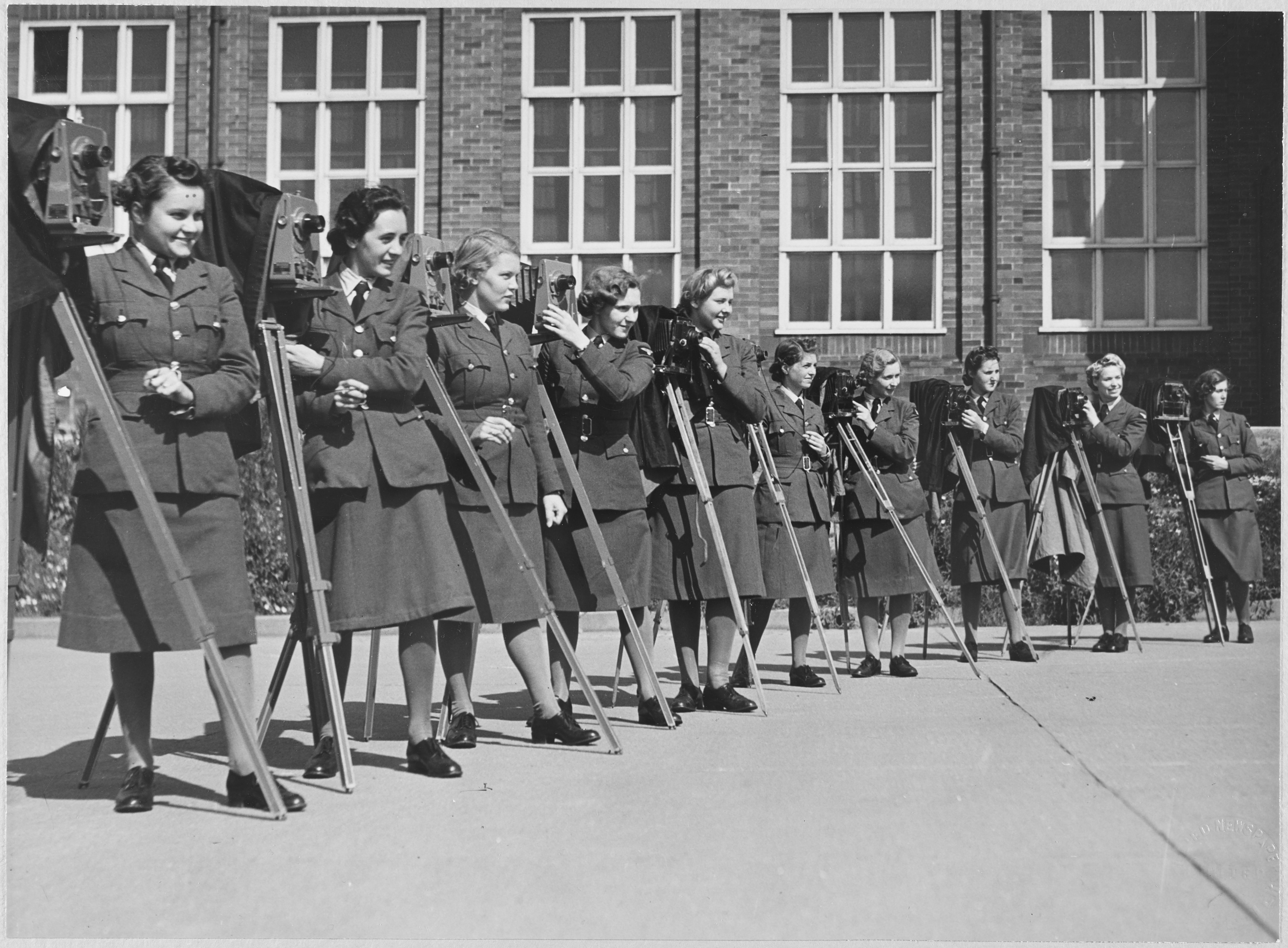From hidden swords to Sting, everything you need to know about walking canes
Sported by traditional types, the walking cane is both stylish, practical – and sometimes deadly.


We must establish one thing from the start. For the purist, there can be only the walking cane (aesthetic and elegant), never the walking stick (robust and functional). In truth, both have their individual charms, with the cane essentially to be ‘worn’ and a stick as a sturdy friend to rely on physically. Their antecedents include the ruler’s sceptre, the magician’s wand, a country cudgel, a Biblical staff and perhaps even a shepherd’s crook.
In An Englishman in New York, Sting sings of his ‘walking cane here at my side’ and taking it ‘everywhere for a walk’; and an ancient Japanese proverb suggests that you ‘depend on your walking stick, not on other people’; but there’s some debate about when they became an indispensable element of the male wardrobe.

In the early 18th century, if countless portraits of the time are anything to go by, gentlemen frequently carried canes and the stick stand to be found in many hallways would contain a variety – one for every day of the week, perhaps, or for specific purposes, from the slick demands of the city to the polished elegance of a night at the opera. Some had tops fashioned into, for example, a dog’s head, with the mouth open to accommodate evening gloves; others had telescopes, compasses, or even both; and many, famously, concealed swords. The latter have something of a cult following and are still made today; the American firm who market the example on the right of this page also make a modern equivalent which has a concealed 1,000,000-volt stun gun.
The arch dandy Beau Brummell used his to make a statement when banished by his one-time friend the Prince Regent – ‘Broken Beau’ sported a stout walking stick, its top in the likeness of the eventual George IV.
As time went on, they were seen as symbols of power and class and made from luxurious materials – chalcedony, amber, ivory, crystal, jet, coral and, of course, silver and gold. Simplicity itself or devilishly detailed, some even sported long silk tassels, their knots encrusted with gems, and jewellery houses such as Fabergé and Cartier were commissioned to create ornamental ones.
Many were functional, the tops concealing watches, compasses, elegant vials, a container of brandy or binoculars. The shafts might contain fishing rods, miniature umbrellas or rolled maps. One even boasted a bicycle pump within, an innovation which makes that sword-stick sound rather predictable.
https://youtu.be/glC9uK1wirk?t=1m53s
Sign up for the Country Life Newsletter
Exquisite houses, the beauty of Nature, and how to get the most from your life, straight to your inbox.
Then, of course, came the novelty examples, which might have sported an ivory skull with rolling eyes, performing this at the flick of a switch, or a dog’s head with a panting tongue. Fashioned from homegrown or exotic woods, some, with arcane and ancient symbols as handles atop shafts of ebony, had a touch of the Occultist Aleister Crowley about them. And so, back to the magician’s wand and the symbol of power.

For those who wanted to flirt with mythology, griffins, dragons, chimeras and sphinxes were often commissioned. Guy West, of shoe designer Jeffery West, taps into this style with his range of skull and skeletal-hand motif canes for the 21st-century man about town (and country).
Finally, to erotica – a hugely popular theme, especially in the late Victorian era, when tops and handles might be fashioned into mermaids, reclining studio nudes, sirens or even opium-den trollops, for the most part concealed beneath the cane wearer’s hand. Asian and especially Japanese design influenced many such outré examples.
The lure of the cane is clear and acquiring one often encourages an entire collection: rabologist (or cane collector) Anthony Moss, joint chairman of the Antique Cane Society, has some 2,400 examples, dating from 1690 to 1948. ‘In 1998, my wife made the mistake of buying me a few and I developed “canemania”,’ he confesses. ‘Collecting has fueled my craving: Victorian, Art Nouveau and Art Deco, from dress canes, decorative canes, defence canes and memento mori to sword sticks.’
His fellow collectors will surely sympathise, as they continue to garner support.
Country Life is unlike any other magazine: the only glossy weekly on the newsstand and the only magazine that has been guest-edited by HRH The King not once, but twice. It is a celebration of modern rural life and all its diverse joys and pleasures — that was first published in Queen Victoria's Diamond Jubilee year. Our eclectic mixture of witty and informative content — from the most up-to-date property news and commentary and a coveted glimpse inside some of the UK's best houses and gardens, to gardening, the arts and interior design, written by experts in their field — still cannot be found in print or online, anywhere else.
-
 No Mr Bond, we expect you to buy: Sean Connery's former villa on the French Riviera could be yours
No Mr Bond, we expect you to buy: Sean Connery's former villa on the French Riviera could be yoursRoc Fleuri Villa 'must be Nice's most desirable home', according to the agents.
-
 Newly released photographs reveal pioneering role of women in wartime photography
Newly released photographs reveal pioneering role of women in wartime photographyTo mark the 80th anniversary of VE Day, Historic England has released a collection of photographs that spotlights women's role in the wartime photography industry.